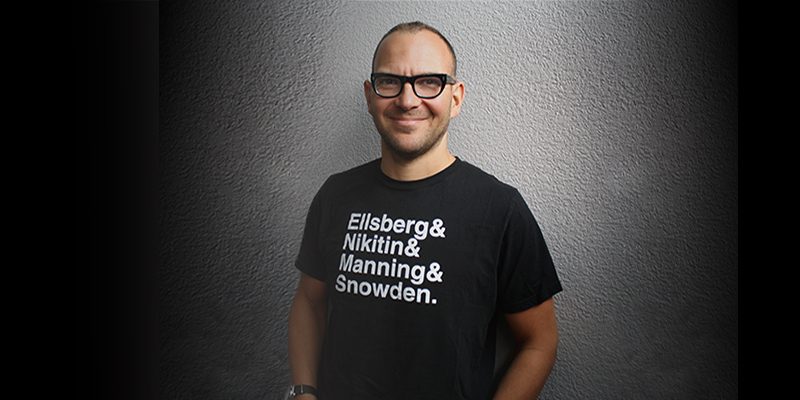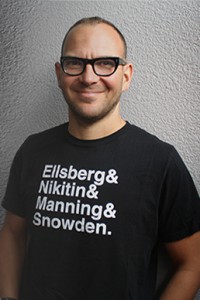Cory Doctorow: Stories Are a Fuggly Hack
 I’ve mentioned before, stories are weird. I mean, really, really weird. Nothing that happens in a piece of fiction has any consequence in the real world. Romeo and Juliet did not live, did not die, and the ‘‘tragedy’’ they represent is objectively less important than the tragedy of the live yogurt culture I digested at the breakfast table this morning.
I’ve mentioned before, stories are weird. I mean, really, really weird. Nothing that happens in a piece of fiction has any consequence in the real world. Romeo and Juliet did not live, did not die, and the ‘‘tragedy’’ they represent is objectively less important than the tragedy of the live yogurt culture I digested at the breakfast table this morning.
My theory is that the parts of our brains that keep track of other people and try to model them, the seats of our empathy, can be tricked into treating the adventures of imaginary people as though they were real. Even though your rational mind knows that imaginary people are inconsequential, the largely automatic, unconscious systems that organize information about the people around you in order to figure out what they’re likely to do – and that let you predict how they feel in given situations and sympathize with them – don’t differentiate between information about real people and imaginary people.
As a result, we can have profound aesthetic experiences by reading stories about imaginary people. This is a strange alchemy: combine a number of inconsequentialities and out pops something profound. It’s not gold from lead – it’s gold from wishful thinking.
These aesthetic effects, the gloriously muddled and contradictory feelings of horror and joy, of eros and terror, of rage and sweetness, are what makes art art. Art is stuff that trips those weird and complicated feelings and moves you through them.
Storytelling, then, is a fuggly (funky and ugly – that is, cool but also really weird and inefficient) hack to get you to feel stuff – make up a story about imaginary people in order to trick your naive empathy into believing that they exist so that you empathize with them and then feel some cool and difficult emotions. When you think about it, it’s weird. I mean, don’t get me wrong; I love a good story, and I tell them for a living, but it’s a very roundabout way to make your limbic system exhibit some exotic behavior.
There are other media, much more abstract media, that seemingly manage to jump straight to the feels: painting, photography, poetry, sculpture, music. Not always – all of these things can tell stories, but they don’t need to in order to make you feel things. Instead, they seem to reach right inside your skull and tickle the feeling parts of you, triggering cascades of intense emotion that are all the more powerful for their inexplicable nature.
Now, this stuff is all very primal and non-rational and is hard to taxonomize and rationalize and turn into something repeatable. If I can’t tell you why ‘‘Guernica’’ makes me feel Guernica-ey, then how are you supposed to improve on it in a future iteration to fine-tune the emotive effect? At least with stories, you know that if you tell a scary story, and it works, the audience will experience fear. But the emotional oomph of non-narrative art is much more mysterious, more of an art, really, and though it may be harder to systematize, when it gets in the groove, look out.
Which is why, as a ‘‘storyteller,’’ I sometimes get a little impatient with people who are really good at those other media – none of which I have any talent for, incidentally – when they rhapsodize about storytelling as a way of practicing their art. That’s not because I want to jealously guard my preserve here in storyland, but because making someone feel something without all that tedious making-stuff-up is a hell of an accomplishment and it’s heartbreaking to see brilliant artists turn their back on it.
One of my favorite places to experience inchoate art is Disneyland. Readers of my books will know that I have a powerful interest in Disneyland and the other Disney parks as artistic expressions – immersive environments built to pull off that lovely non-narrative, visceral aesthetic trick. Disney itself often talks about the rides, especially the classics like Peter Pan, Small World, Haunted Mansion, and Pirates of the Caribbean as examples of storytelling. ‘‘Storytelling’’ is a touchstone within the company’s culture.
But the great value of these rides, the reason that they attract so many visitors for so many years, is that they are not stories. They are nonrational, non-narrative experiences that provide a kind of impressionistic, multisensory account of things that happened in movies that you may or may not have seen. For example, virtually no one who rides Mr Toad’s Wild Ride has seen that animated short, and Song of the South, on which Splash Mountain is based, has been suppressed for decades due to its racist themes.
If you had never seen Snow White and the Seven Dwarves, but you went to Disneyland and rode Snow White’s Scary Adventures a couple of times, there’s no way you’d be able to summarize the plot of the movie. But: I bet you’d be able to describe all the emotional beats of the movie, explaining in detail all the ways that you feel when you watch it. Because Snow White’s Scary Adventures is a fine-tuned machine for evincing emotion from its riders, using several senses and multiple media, in an immersive environment that is so effective it’s almost telepathic.
Compare this with Disney California Adventures’ Little Mermaid ride. It is an extremely rigorous, scene-for-scene retelling of the movie. Ride it even once and you’d be able to outline the whole plot. But for the most part, people who ride that one come away feeling nothing. It’s a ‘‘book report’’ ride, a sacrifice to the uncaring gods of story. On its face, I should love that ride, because it’s all animatronic robots and I love animatronics so much I’m practically a robosexual. But if you gave me a fistful of Fastpasses for it, I’d just hand them out to strangers and get in line for the Haunted Mansion.
Oh, the Haunted Mansion, my favorite. It couldn’t be built while Walt was alive – there were far too many differing and irreconcilable visions for the ride. On top of that, Walt insisted that Marc Davis (known for his character designs) and Claude Coats (known for his genius scenery design) collaborate on the ride. But Coats and Davis hated each other and couldn’t work together. When Walt died, the two men divided up the Mansion and each of them designed half; the first half, all moody and scenic, is Coats; the second half, beginning in the ballroom and absolutely, insanely crammed with characters, is Davis.
Many people have tried to graft stories onto the Mansion, and indeed there were many stories envisioned for it, dating back to the original prospectus for the ride. But it was the lack of story, and the magnificently executed atmospheric, comic, and character elements that made the Mansion into a skewer sharp enough to pierce the breast of so many who ride it (myself included) sending them back for ride after ride after ride.
I am proud and amazed to have found a niche in the world in which I get to make up fairy tales about imaginary people and get paid for it, because these apparently entertain people. I’m one of those people who loves story. But as a ‘‘storyteller,’’ I want to tell you, if you’re one of those people who can move people without all the stage business of Once Upon a Time, I envy you.
Cory Doctorow is the author of Walkaway, Little Brother, and Information Doesn’t Want to Be Free (among many others); he is the co-owner of Boing Boing, a special consultant to the Electronic Frontier Foundation, a visiting professor of Computer Science at the Open University and an MIT Media Lab Research Affiliate.
This review and more like it in the November 2014 issue of Locus.






